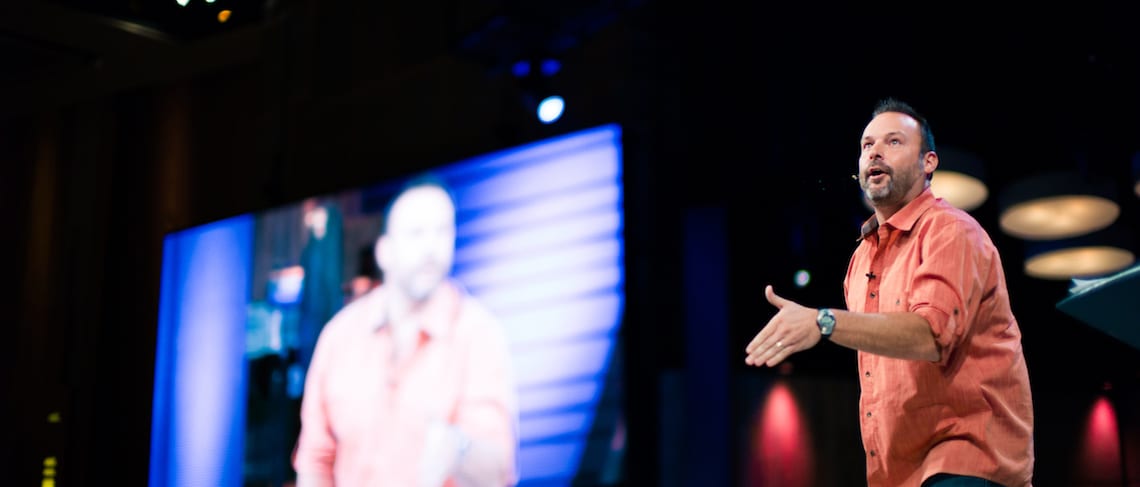
 “You can choose courage or you can choose comfort, but you cannot have both.”
“You can choose courage or you can choose comfort, but you cannot have both.”
When Dr. Brené Brown spoke these words at the Global Leadership Summit in 2013, I heard the challenge behind them: Choose courage. And as I sat in that auditorium, I knew exactly where God was asking me exhibit courage—in telling the story of my daughter’s death in 2008 with unflinching honesty. The 200-page Word document on my laptop laid bare the journey I had been on since the fateful day our middle daughter, Katie, died at 19 of a ruptured cerebral aneurysm.
Brené Brown’s words struck me so deeply that I wrote them on a piece of paper and pinned them above my desk as a reminder whenever I sat down to write. Capturing our experience in words thus far hadn’t taken much courage, really—it had been my way of grieving. It was how I had survived. But people had been encouraging me to turn those writings into a book—and it was the “unflinching honesty” piece that gave me pause. Did I have the courage to write about not only the times things had gone well in how I navigated my daughter’s death—but also the times I had blown it? Was I brave enough to put into print my failures as a grieving mom?
“Choose courage,” Dr. Brown’s words reminded me as I began the editing process.
I had read many grief books after Katie’s death, and the most helpful ones shared parts of the authors’ stories that pulled no punches. But there were few books available that exhibited the type of visceral honesty I knew I was being called to write—a book that stayed in the story from beginning to end, that tackled the unanswerable questions of God and pain and identity—and included those scenes I was embarrassed to write. Choose courage.
Because we are a large family and my story is also the story of my husband and four remaining adult children, I asked for their input into the manuscript—and boy, did they oblige!
“You’re making us look too much like the Waltons,” one daughter said after reading the manuscript. “Show more of the ugly stuff! That’s the stuff that will be most helpful to others going through loss.” The kids were more than happy to remind me of times when I had pushed too hard to insinuate myself into their grief process, or had overshared with complete strangers or had tried to force new traditions too soon. I added new scenes and adjusted existing ones to show the full story.
“You can have courage or you can have comfort, but you cannot have them both.” Imagining readers knowing some of my worst moments as a mom wasn’t exactly comfortable, but it felt right. I sensed the scenes that took the most courage to write would be the very ones that would offer the most help to readers, freeing them to acknowledge their own shortcomings and giving them hope that they, too, could get back up and try again.
 My book was published by Tyndale House on April 5 of this year. It’s title: Colors of Goodbye: Holding On, Letting Go, and Reclaiming Joy in the Wake of Loss, and that pretty much describes my journey. When Katie died, I worried my life was ruined, that I would never again have joy—the very character trait that Katie had most loved about me. But by leaning into the pain, by grieving wholeheartedly, and by staying open-handed toward God, I experience deeper joy, richer gratitude, and a more rock-solid faith today—not in spite of our loss but because of it.
My book was published by Tyndale House on April 5 of this year. It’s title: Colors of Goodbye: Holding On, Letting Go, and Reclaiming Joy in the Wake of Loss, and that pretty much describes my journey. When Katie died, I worried my life was ruined, that I would never again have joy—the very character trait that Katie had most loved about me. But by leaning into the pain, by grieving wholeheartedly, and by staying open-handed toward God, I experience deeper joy, richer gratitude, and a more rock-solid faith today—not in spite of our loss but because of it.
Every year at the Summit, I walk away with at least one significant, game-changing nugget I know God intended for my ears. And those words from Dr. Brown in 2013, which hung like a beacon above my desk as I edited, relentlessly fueled my courage as I edited this book.
To the dedicated WCA team that prayerfully seeks God’s leading in inviting experts like Dr. Brené Brown to speak at the Summit—please hear this: The two most common responses I receive about the book are these: “Your courage in writing a book like this is helping me be brave,” and “Your honesty helps me relate to your story. Thanks for being so real.” No doubt Dr. Brown challenged thousands of listeners with her talk that year, and I thank you for inviting her—because she made me a better writer and a more faithful steward of my daughter’s life and death.
The Global Leadership Summit is a game changer year after year—not only for Type A leaders and executives of large organizations, but for people like me who are listening for God’s voice as they lead their own lives. Thanks, WCA—and thanks, Dr. Brown!
September Vaudrey is a speaker, a writer, and a lover of all things family. She and her husband, Scott, have five grown children and two grandchildren. September works at Willow Creek Community Church in South Barrington, Illinois, where she is writer/content developer in the church’s pastoral response department and teaches in workshops on parenting, grief, and marital restoration. Her book, Colors of Goodbye, captures the loss of her 19-year-old daughter—and September’s journey to rebuild her life in the wake of this loss.















Recent Comments